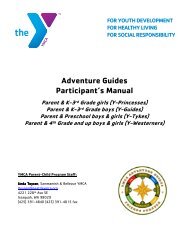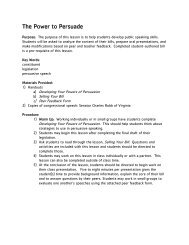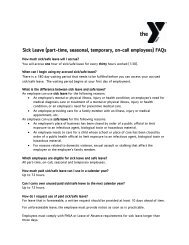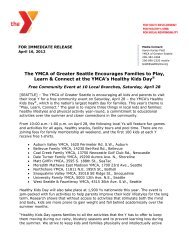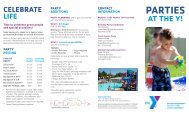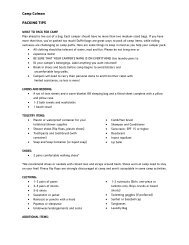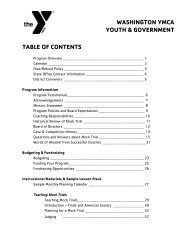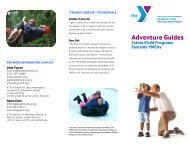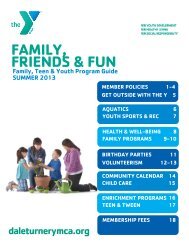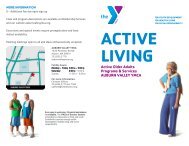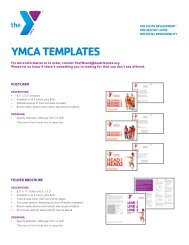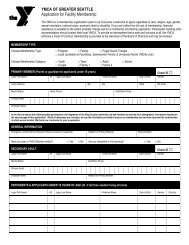washington mock trial rules of evidence - YMCA of Greater Seattle
washington mock trial rules of evidence - YMCA of Greater Seattle
washington mock trial rules of evidence - YMCA of Greater Seattle
You also want an ePaper? Increase the reach of your titles
YUMPU automatically turns print PDFs into web optimized ePapers that Google loves.
Badgering/Argumentative. “Objection. Counsel is badgering the witness.” Or, “Objection.Counsel is arguing with the witness.”Motion to Strike. If inadmissible <strong>evidence</strong> has been introduced before an objection can betimely made and the court sustains the objection, a follow-up motion should always bemade to purge the record <strong>of</strong> the tainted <strong>evidence</strong>. “Your Honor, I move to strike the[nonresponsive] [inadmissible] portion <strong>of</strong> the witness's testimony from the record,” or,“Your Honor, I ask that the jury be instructed to disregard the witness’s last statement.”Note: Teams are not precluded from raising additional objections which are available underthe Washington Mock Trial Rules <strong>of</strong> Evidence.Introduction <strong>of</strong> ExhibitsThere is a formal procedure for introducing exhibits, e.g., documents, pictures, guns, etc.,during an actual <strong>trial</strong>. The exhibit must be relevant to the case, and the attorney must beprepared to defend its use on that basis.In <strong>mock</strong> <strong>trial</strong>, exhibits are usually pre-marked for identification, and the parties stipulate totheir authenticity. In State competition, teams <strong>of</strong>ten use enlarged copies <strong>of</strong> the exhibits,but enlargements are normally not allowed under the National <strong>rules</strong>.Below are the basic steps to use in <strong>mock</strong> <strong>trial</strong> when introducing a physical object ordocument for identification and/or use as <strong>evidence</strong>.• Take the item, without showing it to the jury, and show it to opposing counsel. Thenask the court for permission to approach the witness.• Hand the marked exhibit to the witness while stating, “I am now handing you [adocument] [an item] previously marked for identification as Exhibit 1.” Ask the witnesswhether he or she knows or recognizes the exhibit, and then ask the witness what it isin order to identify it and establish its relevance.• After laying this foundation, <strong>of</strong>fer the exhibit into <strong>evidence</strong>. “Your Honor, I <strong>of</strong>ferExhibit 1.”Opposing counsel will either object to the <strong>of</strong>fering <strong>of</strong> the exhibit or say, “No objection.” Ifopposing counsel makes a specific objection as to why the exhibit is not admissible, theattorney <strong>of</strong>fering the exhibit will be given an opportunity to respond. In many casesopposing counsel will simply object for lack <strong>of</strong> foundation, meaning that the attorney



